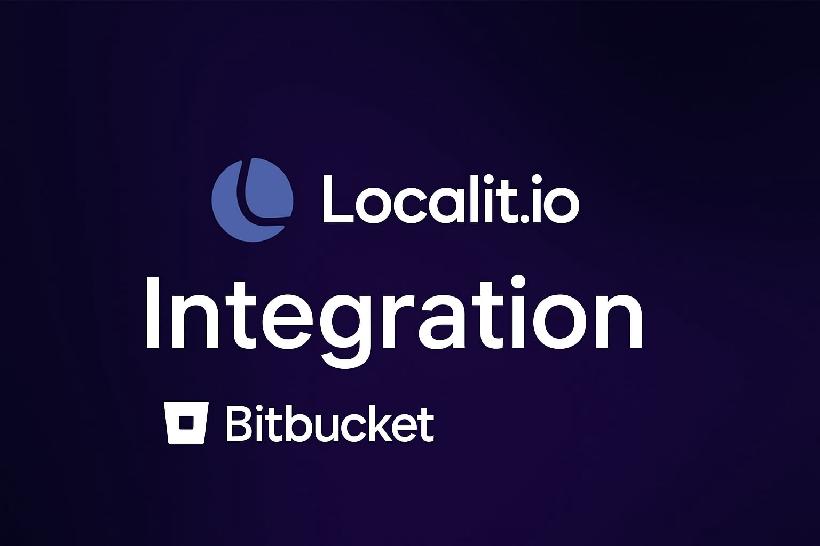Ecommerce is becoming much more than a business, it’s truly a new way of living. Amazon delivers to 131 countries around the world, Temu and Shein are grabbing the global attention with their low prices, eBay has completely rebranded itself to keep up with the times. Whether you are hungry, looking for the hottest music concert tickets in town, or interested in the latest shopping trends, ecommerce has the perfect answers for you.
Ecommerce giants are incredibly profitable, a fact that has much to do with their fearless expansion into the global arena. But it’s not enough to just add a country internet code to your domain and call it a day. What you need here is the ability to effectively communicate with your customers without getting them confused about incorrect currencies, clunky product descriptions, awkward order placement routines, and weird units of measurements. The process of adapting the contents of an ecommerce website and marketing materials is called localization, and it helps companies all over the world grow faster, grow better, and grow stronger. Want to find out how exactly localization benefits ecommerce businesses (and possibly discover ways to help you own)? Stick around as I’ll be breaking the main benefits of localization for this industry and show you a few convincing examples of effective localization in action.
What Is Localization?
Localization is essentially the process of adjusting and customizing existing content that works in one market to do the same job but in a different language spoken in a given target country. It resembles reworking a menu for a restaurant that is ready to open in a new locale. A pork rib joint in Egypt is unlikely to garner much attention even though it can be incredibly popular in Canada. Same goes for a beef burger place in India. You get the picture.
Playing around with words and phrases, using clever descriptions, producing photo and video content that resonates with locals is easy (sort of) when it comes to your own market that you grew up in and/or know inside out. But expanding globally into uncharted territory is not always easy and requires a concerted effort from your localization team. Here is who you need to engage for the best result:
Localization Program Manager: Oversees the overall localization strategy, budget, and alignment with business goals
Localization Project Manager: Manages day-to-day project timelines, resource coordination, and stakeholder communication
Localization Engineer / Tool Specialist: Handles the integration and maintenance of localization platforms, tools, and workflows to streamline the process
Translator / Linguist: Provides accurate translation of content with cultural nuances and traditions in mind
Localization Quality Assurance (LQA) Specialist: Tests localized content to ensure quality, consistency, and proper functioning across different locales
Internationalization Engineer: Ensures that the product’s code and architecture are designed to support various languages and cultural formats
Cultural Consultant / Subject Matter Expert: Offers insights into cultural sensitivities and regional nuances, helping tailor content to resonate with local audiences
Desktop Publishing / Multimedia Specialist: Adapts visual and multimedia elements (such as graphics and layouts) so that the localized product maintains its intended design and user experience
In other words, localization is not just a simple translation order that you place and get within 5 days. It requires translating, adapting, reworking, rethinking, and improving what you already have to achieve the desired effect. Here’s the type of content companies normally localize:
Website content
Mobile app interfaces
Software user interfaces
Marketing materials
Product documentation
Training materials
E-commerce product descriptions
Legal documents
Multimedia content
Social media content
In other words, everything that a customer’s eye might stumble upon needs to be localized.
What Benefits Does Localization Bring for Ecommerce Businesses?
In order to answer this question, we need to explore a bit more about the impact of localization in general and human psychology that often irrationally drives customers to make certain actions, both online and offline. Some studies suggest that people are much more inclined to shop in their native language when it comes to online shopping and ecommerce platforms. Well, here’s some proof:
Some Stats
Companies that invest in localization are 1.5 times more likely to experience a significant increase in total revenue
Mobile apps that are localized see a 128% boost in downloads and generate 26% higher revenue from in-app purchases. (App Annie)
76% of consumers prefer to buy products with information available in their native language, and 40% refuse to make a purchase if the content is in a foreign language—even if they understand it
Targeting key markets like China, the U.S., Japan, and Germany through localization provides businesses with access to nearly 50% of the world’s total e-commerce sales
E-commerce sites that localize their content experience a 70% surge in traffic and significantly improved conversion rates
90% of internet users prefer websites that offer content in their native language, leading to higher engagement and lower bounce rates
Localized email marketing campaigns generate 6x higher transaction rates compared to non-localized ones
Basically, people crave content and interfaces that they understand. Crafting such a response in a different language is the main goal of localization, a tool that helps businesses meet their customers in unexplored lands with the help of careful customizations.
Key Ecommerce Benefits
Wondering if an ecommerce business should invest in localizing its offers? Learn more about the reasoning beyond just “more revenues” here.
Expanded Market Reach
Feeling boxed in by your current market? Localization is your ticket to the world and its multitude of customers. Use this power of bridging cultural gaps with localization to secure new orders, bookings, and requests wherever you are. Fun fact: businesses that localize their prices experience a 30% faster growth than those that don't.
How to achieve this 💡: Choose your regions of expansion wisely and conduct in-depth research. Europe is highly lucrative but has 30+ languages, while China is also a mouthwatering business destination but its singular language is very hard to master. Maximize your reach through careful planning and strategizing.
Improved Customer Experience
Nobody likes feeling lost in translation. Offering product descriptions, support, and interfaces in a customer's native language makes shopping a pleasant walk in the park instead of a maze with unclear instructions and clumsy translations. Customers often make impulsive purchases, any hurdle on their way from catalog to checkout can bring them back to reality where they realize “no, I don’t actually need these Pac Man oven mitts”. Your loss.
How to achieve this 💡: Analyze your local competitors, study customer behavior patterns, use top industry cases as your guide to placing the customer first in this quest for attention and a place under the sun.
Higher Conversion Rates and Increased Sales
Localization isn't just a feel-good strategy, it boosts your bottom line. This is probably the least surprising benefit but it deserves to be mentioned. The more languages your ecommerce platform offers, the bigger revenues you can expect.
How to achieve this 💡: Invest in localization as soon as possible and plan ahead. Localizing for France will unlock a path to Belgium, Switzerland, West Africa, and some other regions in the world. The Korean diaspora around the world will appreciate your efforts to make your platform more accessible. Looking after your customer always pays off, literally.
Enhanced Brand Loyalty
Customers appreciate brands that speak their language, literally and figuratively. By localizing your content, you show respect for cultural nuances, traditions, and expectations. This fosters trust and loyalty. Who doesn’t like to feel valued and appreciated? Localization is your universal tool of achieving this through careful customization of content, messages, and the rest of it.
How to achieve this 💡: Analyze your competitors to see what they get right and why customers turn to them. Use your local expertise mixed with the new locale market research to create a flexible but efficient plan of winning over target audiences.
Competitive Advantage
A company that offers me all the important info about the product I want to buy in a language that I understand well or a very famous platform only available in Japanese (I don’t speak Japanese)? My answer is clear (I also don’t really like using automated web page translations).
Localization is a tangible and effective advantage that sets you apart from the competition, both international and local. The more localized your business becomes, the more universal and ever-reaching it gets. Everyone gets a piece of your services, while you get your orders. Win-win, and the only loser? Your competitors.
How to achieve this 💡:Keep a close eye on the latest developments in the worlds of AI, Ecommerce, and local news. Track your competitors’ progress and new ideas, don’t be afraid to experiment with marketing campaigns.
Ecommerce Platforms that Get Localization Right
How can I not mention some of the most successful companies in the ecommerce game when it comes to localization. It’s worth learning a thing or two from the giants of the industry even if you don’t have the resources to match theirs. It’s all about effort and making your product feel homely for new audiences.
Amazon
Amazon nails localization by making sure its platform feels like home, no matter where you are. In India, where credit card use is low, they introduced cash on delivery. In Japan, where customer service is everything, they doubled down on fast delivery and top-tier support. They don’t just translate their site: they tweak payment options, product selections, and even marketing to match local habits.
Beyond that, Amazon fine-tunes everything from product descriptions to images, making sure what’s shown actually appeals to each market. They know that selling in France isn’t the same as selling in Brazil, and they put in the work to get it right. That’s why their platform doesn’t just work worldwide: it feels local.


ASOS
ASOS has mastered the art of making online shopping feel personal, no matter where you are. They've translated their website into multiple languages and accept 19 different currencies, ensuring that customers worldwide can shop with ease. By offering 10 diverse payment methods, ASOS caters to local preferences, making transactions seamless for everyone.
Their commitment to localization doesn't stop there. ASOS provides free worldwide shipping and returns, removing barriers that often deter international shoppers. They've also established localized return solutions, like partnering with LaPoste in France, to make the return process hassle-free. By tailoring their platform to meet the needs of various markets, ASOS ensures a shopping experience that feels both familiar and personalized, no matter where you're clicking from.


Shein
Shein has skyrocketed to global prominence by deftly tailoring its operations to resonate with local markets. A key move was partnering with India's Reliance Industries to re-enter the Indian market after a 2020 ban, demonstrating adaptability to regional regulations and consumer preferences.
In Latin America, Shein is localizing manufacturing by establishing a hub in Brazil, aiming to reduce delivery times and better serve local customers.
Additionally, Shein's "test-and-repeat" model involves producing limited quantities of new designs—typically around 100 to 200 pieces—and scaling up production only if the items prove successful, allowing the company to stay agile and responsive to local fashion trends.

Final Thoughts
I believe that localization isn’t just helpful for ecommerce—it’s a game changer. If you want to sell globally, you need to make shopping feel local. That means accurate translations, familiar payment methods, and content that makes sense for each market. Get it right, and you’ll see better sales, higher engagement, and stronger customer loyalty.
But localization is more than just swapping words: it’s about adapting everything from product descriptions to checkout flows. Doing this manually is a nightmare. That’s why Localit is a must. It automates translations, integrates smoothly with ecommerce platforms, and helps teams manage localization without the usual chaos. Want to grow your business the right way? Invest in localization and head over to localit.io to get your free plan today. It works.

 Bitbucket Integration: Complete Guide to Automated Localization Workflow
Bitbucket Integration: Complete Guide to Automated Localization Workflow ChatGPT-5 Now Available in Localit.io
ChatGPT-5 Now Available in Localit.io Everything You Need to Know about Mobile App Localization: Challenges + Best Practices of Working in a Different Language
Everything You Need to Know about Mobile App Localization: Challenges + Best Practices of Working in a Different Language